An Oasis in the Slum |
|
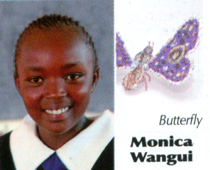 |
Most insects look complicated and it was difficult choosing the one to make. I observed butterflies perch on flowers and my friends urged me to try making that insect. The butterfly is a beautiful insect, which is common in certain seasons. I was not sure if I could capture this beauty, but with the help of pictures I learnt how to go about it. I collected wire and cartons and worked on the insect for two weeks. I enjoyed the project, especially when my classmates and I started working together and sharing ideas. I also learnt how to recycle old cartons, papers, wires and plastic. |
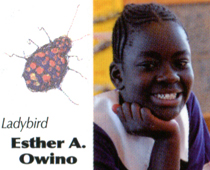 |
I was happy to construct a ladybird as it is my favourite insect. I used old wires for the sculpture and papier-maché from old newspapers and water paints to make it colourful. Initially, I wasn´t sure I could come up with a smart insect but in the end I enjoyed the project and kept improving on my model as I went on. Although I knew the ladybird from when I was very young, I learnt more about it during the project. For instance, I now know that it has six legs and two pairs of wings. It took me three days to complete the object. |
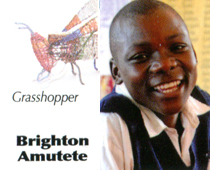 |
Spiders are not insects. They are arachnids, but I felt I could make one to enrich the project. Spiders are common in the farms and in corners of houses where they spin their webs. I also made a grasshopper, which are common around our school. I collected wires of different thickness for the project. It was fun working with my friends and we joked about each other´s work. I worked for two weeks and always applied the characteristics of the insect to make it as real as possible. |
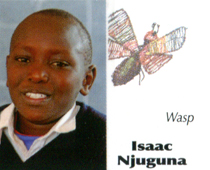 |
I made a wasp and it was easy because I had a picture to refer to. Wasps are also very common around our school. I used papier-maché and old wires. The project was challenging but with support of other students it was easier and enjoyable. During the four days that I worked on the insect, I learnt to recycle waste material in the environment. |
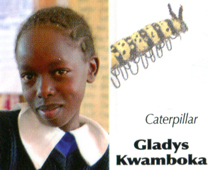 |
I made my caterpillar from wires of different colours and papier-maché and coloured it with water paints. It was challenging folding and creating forms with wires. But with a little help and guidance, I was able to complete the project. I chose the caterpillar because it looked interesting to make. I learnt how to make criticism for my work and I was through within four days. |
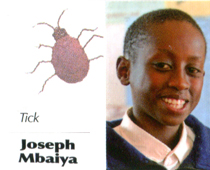 |
I used wires, old newspapers, banana fibre and paint. Ticks are only common where there are animals. I had only seen them once when we went to visit a farm near our school. I learnt how to recycle waste to make beautiful insects and ticks. |
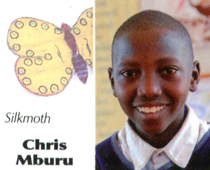 |
I was excited to make a silkmoth. Like many other students, I had only seen it in pictures. I used pictures from a science book, wires, leaves and a piece of carton box. Through the project I learnt more about the features of the insect. |
Source: icipe








